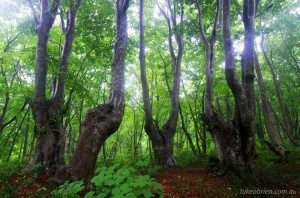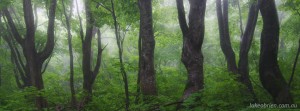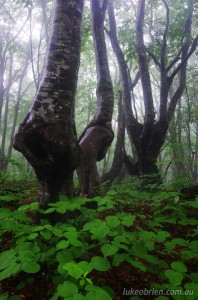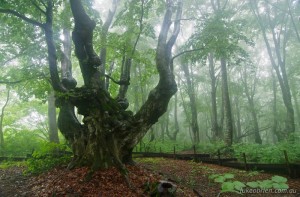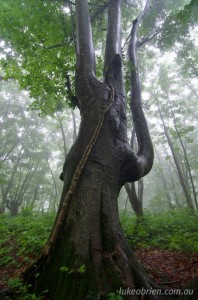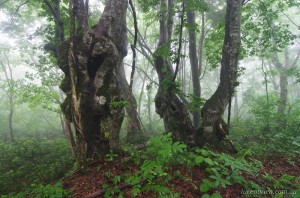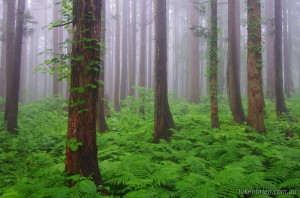Nakajimadai Recreation Forest: Meeting the King of the Japanese Beech
The forest has always been my favourite photographic subject. Whether its gnarled old trees, rushing river cascades or intricate mossy details on the forest floor I have always been drawn to the wild forests of Tasmania and whenever we visit Japan I make an effort to visit the wonderful beech forests in this part of the world too.
Since the heavy rain forecast made climbing Mt Chokai a little less appealing, we spent two days exploring the forests and gorges of the region. It is currently rainy season in Japan, so the gorges were wet and glistening, the rivers full and the forests shrouded in a beautiful mist for most of the time we were there.
These images are from the Nakajimadai Recreation Forest in southern Akita, on the lower slopes of Mt Chokai. The altitude was around 500 metres. The mist was a constant companion and made composing and photographing a joy. In fact, this was one of the most enjoyable days photographing I have had in recent times.
Japanese beech (called “buna” in Japanese) are quite common through northern Japan. There is a large tract of undisturbed buna forest in the Shirakami Mountains (northern Akita/southern Aomori) which is listed as World Heritage. The forests surrounding Mt Chokai are part of a “Quasi” National Park.
The drawcard to the Nakajimadai Recreation Forest is the “Agariko Daio” (あがりこ大王)which is the “Great King” of the bunas around here. It is over 300 years old, 25 metres high (buna do not grow as high as the giant eucalypts of Tasmania) and 7.6 metres in circumference.
There are numerous other twisted and fantastically shaped buna all over this reserve, and the mist made the shoot absolutely stunning. Given the “bad” weather forecast we had the place almost entirely to ourselves (I saw only one other visitor, and he too was dragging a camera and tripod around). We were given some bear bells on our way in, as the potential to stumple across the path of a bear is very real at this time of year, but luckilly for us we didnt meet any of those…
There was a small grove of cedar near the entrance to the reserve. The perfectly straight trunks were an interesting contrast to the gnarled old buna.
Part III of our travels in the area coming soon 🙂
